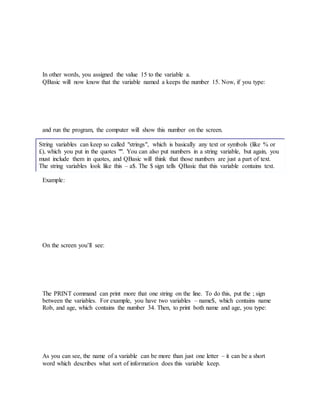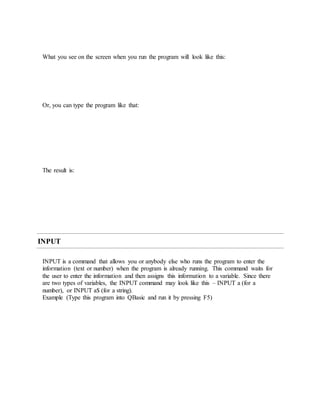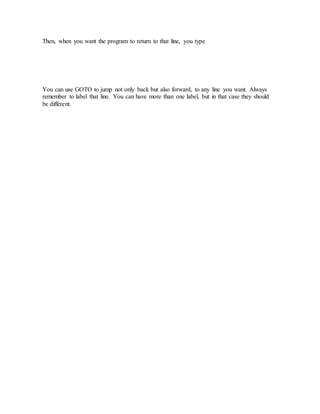This document provides an overview of basic commands in QBasic including PRINT, INPUT, GOTO, and variables. PRINT displays text or numbers on the screen. INPUT allows the user to enter information when the program is running which is then assigned to a variable. Variables, which can be numeric like a=15 or string like a$='text', store information in memory. GOTO jumps the program execution to a labeled line, allowing it to skip around non-sequentially. These basic commands lay the foundation for building programs with QBasic.




